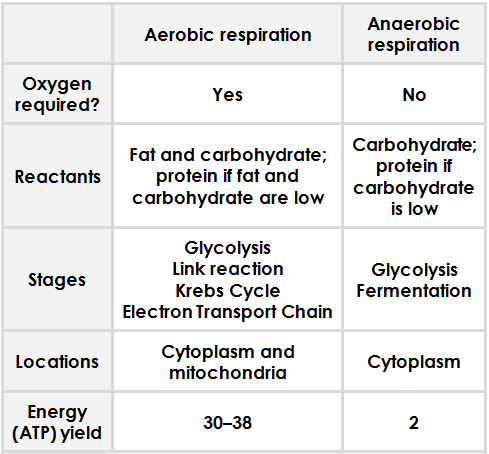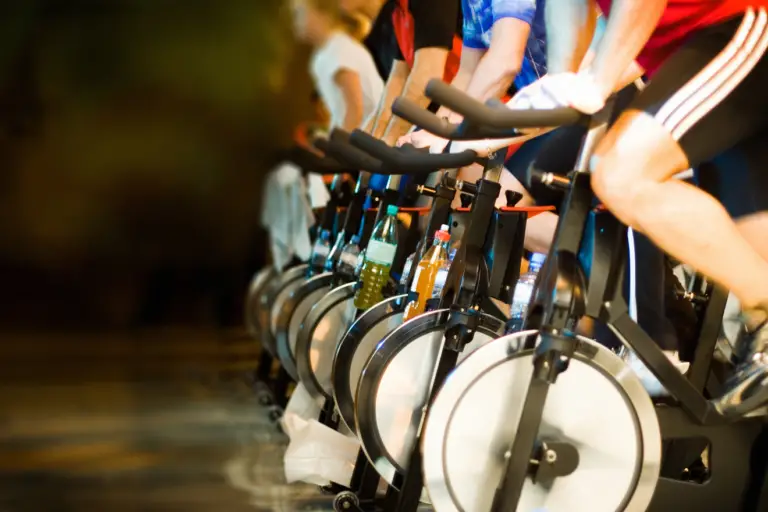Introduction to cardio
What is cardio?
Cardiovascular training, also known as cardiorespiratory training, or simply cardio, is any type of physical exercise that raises your heart rate for a sustained period of time. This helps to improve physical endurance and the strength and efficiency of your heart and lungs (i.e. your cardiorespiratory system).
In its most basic form, cardio involves performing an exercise of moderate intensity (such as jogging) for a prolonged duration. However, there are different types of cardio, with intensity levels ranging from light to maximal. As you will learn in How to do cardio, training at different intensities for different lengths of time leads to the development of different aspects of fitness.
What are the benefits of cardio?
Cardio is fantastic for your health and well-being. In addition to improving your endurance and cardiorespiratory fitness, cardio can:
- Reduce your blood pressure and resting heart rate
- Increase your energy level
- Strengthen your bones, tendons, and ligaments
- Increase the level of your high-density lipoprotein (i.e. ‘good’ cholesterol) and reduce the level of your overall cholesterol
- Increase your insulin sensitivity, which reduces your risk of diabetes
- Reduce your risks of heart disease, stroke, osteoporosis, and certain types of cancer
- Boost your immune system
- Enhance your mental health and cognitive abilities
- Improve your overall level of physical fitness
If you’re following a weight training program, cardio can also help your muscles to repair themselves and grow. It does this by speeding up the delivery of oxygen and nutrients to, and the removal of waste products from, your muscles. Muscular growth is also aided by the increase in insulin sensitivity, which helps your muscle cells to better absorb nutrients.
What do you need to know before you can start cardio?
Unlike weight training and other forms of strength training, which rely mainly on anaerobic respiration for energy, cardio relies primarily on aerobic respiration. For that reason, it is also known as aerobic endurance training. Before you start cardio, it’s wise to have at least a basic understanding of these two energy-producing systems and the science of endurance training. Aerobic respiration, anaerobic respiration, and the basics of endurance training science are explained below. The better you understand these subjects, the more control you will have of your cardio training, allowing you to gain better results.
What are aerobic and anaerobic respiration?
When you exercise, your muscle cells need energy. The more intensely your muscles contract during the exercise, the more energy your muscle cells will need.
Your muscle cells get their energy from the food that you eat. The food is broken down into nutrients, such as fat, protein, and carbohydrate, by your digestive system. The nutrients are pumped around your body, to your muscle cells, by your cardiovascular system (heart and blood vessels). Your muscle cells take the nutrients in and break them down to release energy, which they store in molecules called adenosine triphosphate (ATP). Your muscle cells can then use the energy stored inside the ATP molecules to fuel their work.
Your muscle cells make ATP in a process known as cellular respiration. There are two types of cellular respiration, one that needs oxygen and one that does not. The type of cellular respiration that needs oxygen is known as aerobic respiration, whereas the type that does not need oxygen is known as anaerobic respiration. The oxygen required for aerobic respiration is, of course, inhaled into your body by your respiratory system (lungs, diaphragm, and breathing muscles) and pumped around your body by your cardiovascular system.
How do aerobic and anaerobic respiration differ?
Aerobic respiration burns fat and carbohydrate (and protein only when fat and carbohydrate are low) and produces lots of ATP via a long, four-stage process (Table 1). The stages occur within the cytoplasm (inner fluid) of your cells and in cellular organelles called mitochondria. In contrast, anaerobic respiration mainly burns carbohydrate (and protein when carbohydrate is low) and produces comparatively very little ATP via a short, two-stage process. The stages take place only within the cytoplasm. As such, compared with aerobic respiration, anaerobic respiration is much faster but far less efficient at producing ATP.
Table 1. A comparison of aerobic and anaerobic respiration, including oxygen requirements, reactants, number of stages, locations of occurrence, and energy yields.
When do your muscle cells use each type of respiration?
When you exercise, both aerobic and anaerobic respiration occur within your muscle cells at the same time. However, the energy system that is relied upon the most at any moment in time depends on how rapidly your cells need to make ATP.
When you first start to exercise, your cells use anaerobic respiration to derive a rapid supply of energy. If the exercise continues for over a minute or so and is of a light to moderate intensity, aerobic respiration starts to kick in and take over. The main source of fuel at this point for aerobic respiration is fat. However, if the intensity of the exercise increases, aerobic respiration starts to burn an increasing amount of carbohydrate instead. What’s more, to keep up with the demand for oxygen and nutrients, your cardiorespiratory system speeds up (your heart rate increases and your breathing speeds up and deepens).
If the intensity of the exercise continues to increase, at a certain point of intensity, the cells start to require a more rapid source of energy than aerobic respiration can provide. Therefore, anaerobic respiration starts to play a more significant role. The more intense the exercise becomes, the more anaerobic respiration will occur and the more muscle fatigue you will experience.
Why does high-intensity exercise lead to muscle fatigue?
In order to rapidly produce ATP, anaerobic respiration mainly burns stores of carbohydrate in your muscle cells known as glycogen. The process of breaking down glycogen to make ATP produces lactate and releases hydrogen ions into your muscles, which your body can process up to a certain point of intensity. However, if the intensity of the exercise becomes vigorous and anaerobic respiration really takes off, lactate and hydrogen ions start to accumulate in your muscles. The ions (not the lactate) lower your muscles’ pH level in a process known as metabolic acidosis, which you experience as muscle fatigue. After a while, the fatigue forces you to stop the exercise so that the cells can clear themselves and the system can be restored. The duration for which you can tolerate vigorous exercise is known as your level of endurance.
Which factors affect your level of endurance?
The two main factors that affect your level of endurance are your:
- Lactate threshold
- Aerobic capacity
Your lactate threshold is the point of intensity at which hydrogen ions and lactate are produced faster than they can be processed, leading to muscle fatigue. You generally reach your lactate threshold when your heartbeat increases to between 80% and 90% of its maximum rate. Your lactate threshold is a good indicator of your level of endurance.
Your aerobic capacity, also known as your VO2 max, is the maximum volume of oxygen that your body can take in and utilize during exercise. Generally speaking, the more oxygen your body can utilize, the better, faster, and longer you can perform. Your VO2 max is affected by a number of factors, including the efficiency of your cardiorespiratory system and the availability of fat-burning enzymes and mitochondria in your muscle cells. Mitochondria, you are reminded, are the organelles in which aerobic respiration takes place.
Which of these two factors limits your endurance the most?
Your VO2 max rests above your lactate threshold. In other words, the accumulation of lactate and hydrogen ions that leads to muscle fatigue occurs before your body even starts to utilize oxygen to its full potential. As such, you can think of your VO2 max as being your aerobic endurance potential, whereas you can think of your lactate threshold as being a factor that can limit your ability to tap that potential.
Does cardio increase your lactate threshold and VO2 max?
Yes. Cardio can increase your VO2 max and especially your lactate threshold. These are two ways in which cardio can help to improve your level of physical endurance. Other ways include optimizing your aerobic and anaerobic metabolisms and boosting the strength and efficiency of your heart and lungs.





